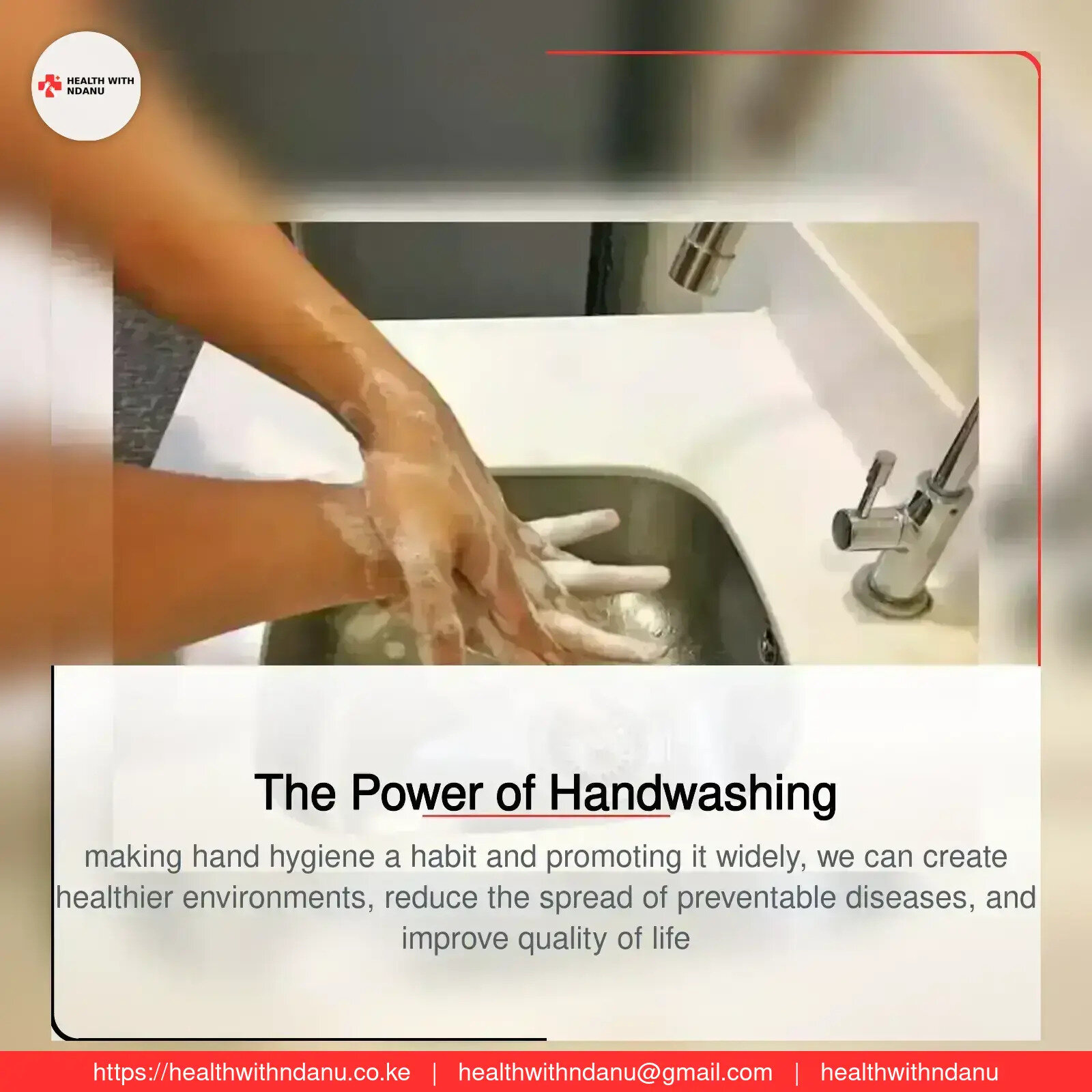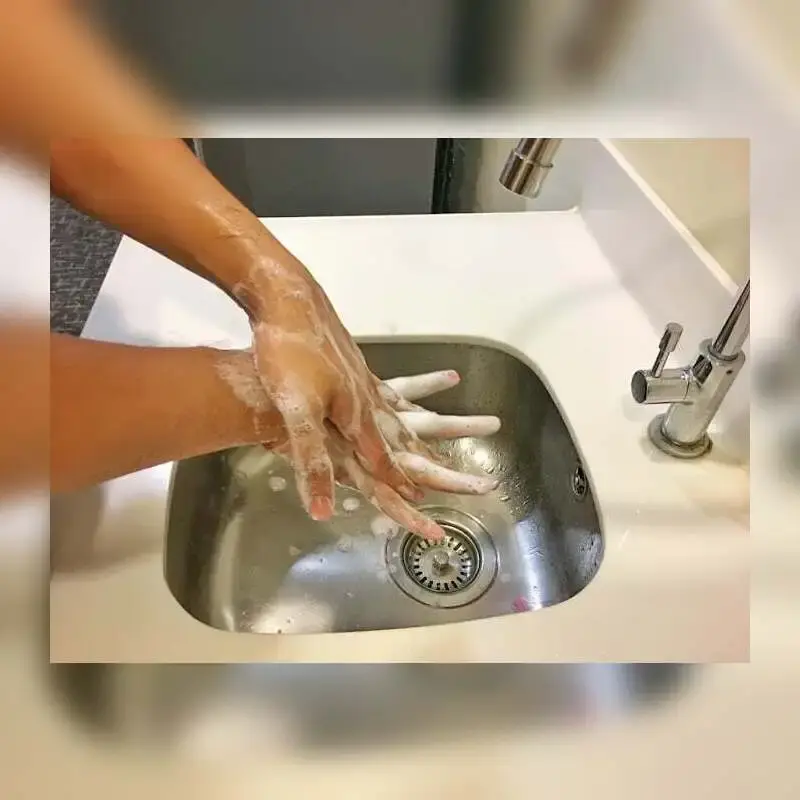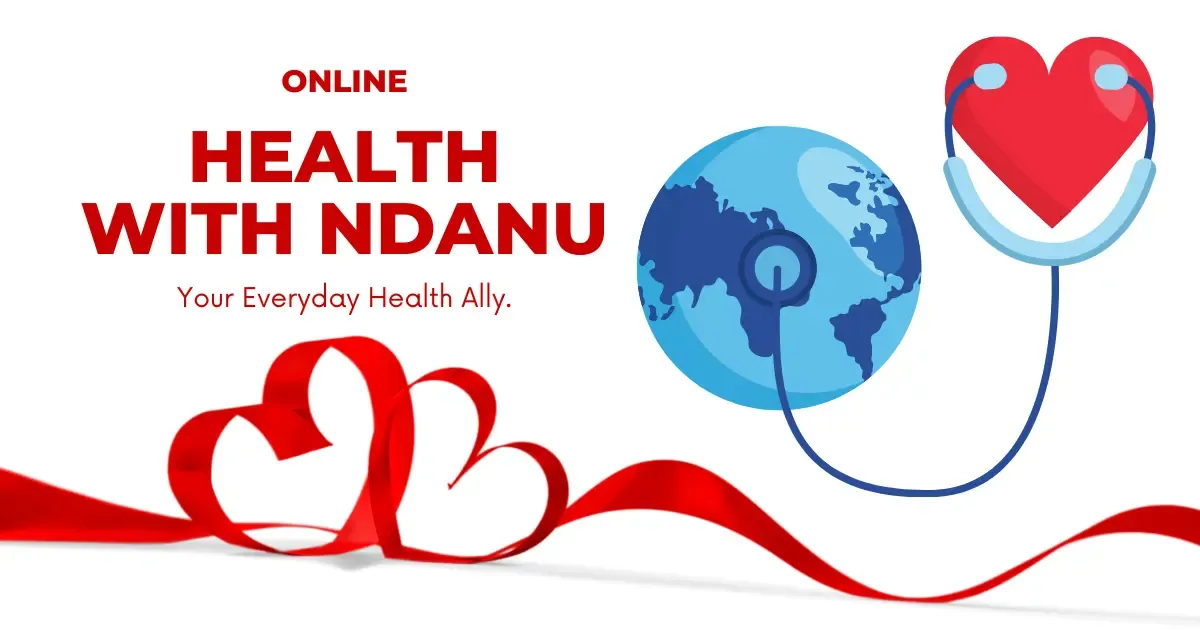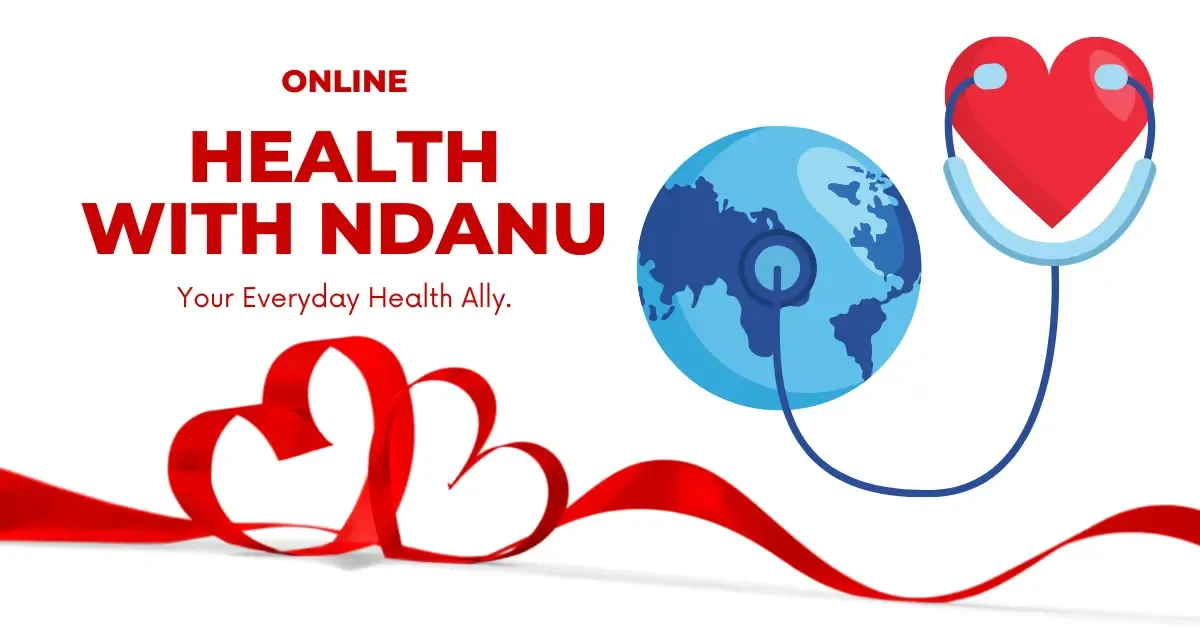The Power of Handwashing
- by Diana Ndanu
- 20 March, 2025
- 0 Comments
- 6 Mins



Introduction
In many communities around the world, simple daily actions have the power to save lives, reduce disease transmission, and improve overall well-being. One of the most vital yet often overlooked actions is handwashing. While it may seem like a basic habit, handwashing with soap is among the most effective ways to prevent infections and break the chain of disease transmission.
This article will explore the importance of handwashing, how it prevents diseases, common misconceptions, when and how to wash hands properly, and practical solutions for promoting hand hygiene even in resource-limited settings.
Why Handwashing Matters for Public Health
1. A Global Lifesaver
According to the World Health Organization (WHO), handwashing with soap can reduce diarrheal diseases by up to 50% and respiratory infections like pneumonia by nearly 25%. Each year, millions of people—especially children under five—die from diseases that could have been prevented through proper hand hygiene.
Handwashing is a simple, low-cost intervention that can save lives, reduce healthcare costs, and improve productivity by reducing absenteeism in schools and workplaces.
2. Breaking the Chain of Infection
Hands are one of the main pathways through which pathogens (germs) are spread. Throughout the day, we touch contaminated surfaces, shake hands, and handle food, unknowingly transferring bacteria, viruses, and parasites to ourselves and others.
Proper handwashing breaks the chain of infection by physically removing dirt, germs, and harmful microorganisms before they can enter the body through the mouth, nose, eyes, or open wounds.
3. Preventing Multiple Diseases
Handwashing can prevent a range of infectious diseases, including:
- Diarrheal diseases (cholera, dysentery, typhoid)
- Respiratory infections (flu, COVID-19, pneumonia)
- Parasitic infections (intestinal worms)
- Skin and eye infections
- Foodborne illnesses
- Hand hygiene is particularly critical in healthcare settings, schools, childcare centers, and food preparation areas where the risk of disease transmission is higher.
When Should You Wash Your Hands?
Handwashing should become a routine practice throughout the day. Here are key moments when it is most crucial:
1. Before eating or preparing food
2. Before feeding a child or breastfeeding
3. After using the toilet or changing diapers
4. After handling waste or garbage
5. After touching animals or animal waste
6. After coughing, sneezing, or blowing your nose
7. Before and after caring for a sick person or treating a wound
By targeting these critical times, individuals can significantly reduce their risk of contracting or spreading diseases.
How to Wash Hands Effectively
While many people claim to wash their hands regularly, studies show that fewer actually do it correctly. Effective handwashing is not just about running water over your hands for a few seconds; it requires a specific technique:
The 5 Steps to Proper Handwashing:
1. Wet hands with clean, running water (warm or cold).
2. Apply soap and lather well.
3. Scrub all parts of your hands thoroughly for at least 20 seconds. Pay special attention to:
- Palms
- Backs of hands
- Between fingers
- Under fingernails
- Wrists
4. Rinse well under running water.
5. Dry your hands using a clean towel or air dry.
A helpful tip is to sing the "Happy Birthday" song twice while scrubbing to ensure you meet the recommended time.
The Role of Soap in Handwashing
Soap is a critical component because it:
- Lifts dirt, grease, and microbes from the skin.
- Breaks down oils that trap germs on the hands.
- Destroys harmful bacteria and viruses, including those with outer membranes like COVID-19.
- Using soap makes handwashing far more effective than water alone. In emergencies where soap is unavailable, an alcohol-based hand sanitizer (with at least 60% alcohol) can be used.
Addressing Challenges in Resource-Limited Settings
In some communities, barriers like limited access to clean water, soap, or handwashing stations make consistent hand hygiene difficult. However, practical solutions can overcome these challenges:
1. Tippy Tap Technology
A Tippy Tap is a simple, low-cost, and water-saving handwashing station made from locally available materials like jerrycans, sticks, and string. It allows people to wash their hands with a small amount of clean water, making it ideal for rural areas.
2. Homemade Soap Initiatives
Encouraging communities to produce homemade soap from local resources (e.g., using oils, ash, or lye) can promote handwashing when commercial soap is unaffordable.
3. Behavior Change Campaigns
Health workers can promote the "habit of handwashing" through public education campaigns, community meetings, posters, and school programs. Visible handwashing stations and hygiene reminders in public areas can help reinforce positive behaviors.
Common Misconceptions About Handwashing
Myth 1: "Water alone is enough to clean hands."
Fact: Water removes some dirt but does not effectively remove or kill germs. Soap is essential to break down and lift away harmful microbes.
Myth 2: "Only dirty hands need washing."
Fact: Germs are invisible to the naked eye. Even hands that look clean can carry bacteria and viruses.
Myth 3: "I only need to wash hands during flu season."
Fact: Handwashing should be a year-round habit to prevent multiple infections, not just seasonal illnesses.
Myth 4: "Hand sanitizer is always better than soap."
Fact: While hand sanitizer is helpful in emergencies, soap and water are more effective at removing certain types of germs, especially when hands are visibly dirty or greasy.
The Economic and Social Impact of Handwashing
1. Reducing Health Costs
Preventing infections through hand hygiene reduces the need for antibiotics, hospital visits, and other healthcare expenses, easing the financial burden on families and health systems.
2. Keeping Children in School
Children miss fewer school days due to diarrheal diseases and respiratory infections when regular handwashing is practiced, improving their learning outcomes and overall health.
3. Boosting Workplace Productivity
Fewer sick days mean healthier, more productive communities and workforces, contributing to national economic growth.
Handwashing and Global Health Goals
Hand hygiene plays a key role in achieving Sustainable Development Goal 3 (Good Health and Well-being) and Goal 6 (Clean Water and Sanitation). Investing in handwashing infrastructure, education, and behavior change can accelerate progress toward these global health goals.
Conclusion
Handwashing is a simple but powerful tool that everyone can use to protect themselves, their families, and their communities from illness. By making hand hygiene a habit and promoting it widely, we can create healthier environments, reduce the spread of preventable diseases, and improve quality of life.
Community health workers, educators, and leaders must champion handwashing in homes, schools, workplaces, and public spaces.
Take Action Today:
Teach others how to wash their hands properly.
Install handwashing stations in public areas.
Share educational materials and practical demonstrations.
Clean hands save lives—start with yours.
Got Your Own Experience? Share with us
Kategoria Maarufu
Blogu Zinazotembelewa Zaidi
Daily Newsletter
Get all the top stories from Blogs to keep track.



